HPIA Lab Receives PRE Grant for Pioneering Facade System Research

HPIA Lab has been awarded a grant of $6,416 from the Gibbs College of Architecture’s Program for Research Enhancement (PRE). This funding will support her groundbreaking project titled “Convergence of Architecture, Material Science, and Mechanical Engineering: Hybrid Responsive Facade System.” The project aims to explore the integration of architectural design with advanced materials and mechanical engineering to develop innovative facade systems that respond dynamically to environmental conditions. This research holds the potential to revolutionize building design and sustainability practices.
High-Performance Interior Architecture Lab Published a Paper in the Sustainability Journal
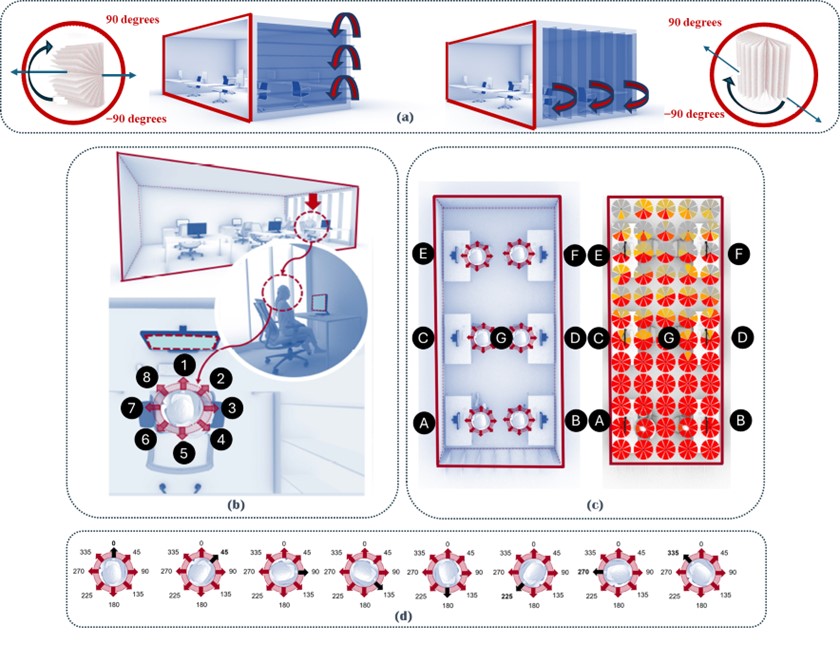
We are excited to announce that Dr. Matin has recently published a groundbreaking paper in the Sustainability journal titled “Sustainable Design: Minimizing Discomfort Glare Through Data-Driven Methods for Responsive Facades.” This research is a significant contribution from the OU High-Performance Interior Architecture Laboratory (OU-HPIA Lab), which is dedicated to developing innovative solutions for sustainable building design.
This project, titled “Comprehensive Daylight Optimization for Responsive Facades,” was generously funded by the Vice President for Research and Partnership at the University of Oklahoma through the Faculty Investment Program (FIP).
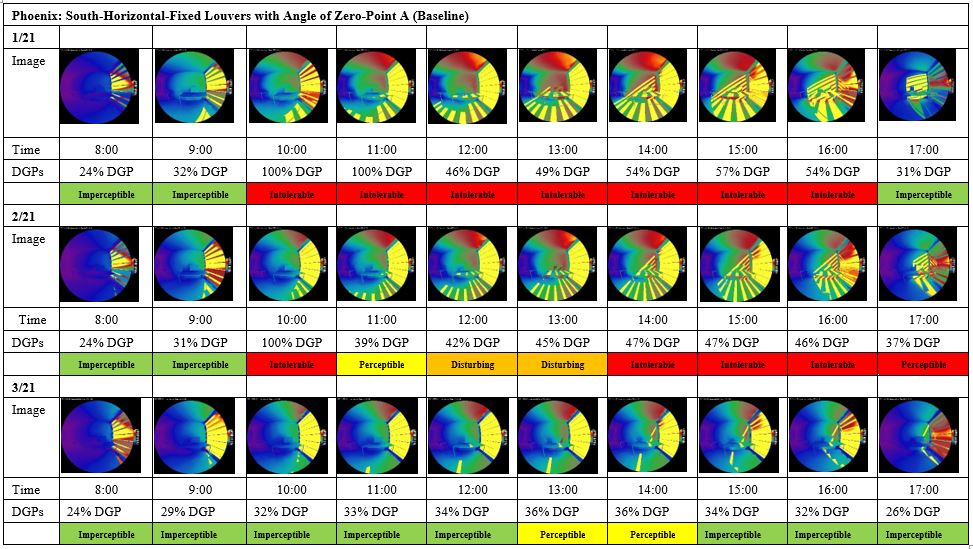
This study addresses the challenge of ensuring visual comfort in sustainable buildings by minimizing discomfort glare through responsive facades. These facades, designed with pre-set algorithms, adapt to changes in daylight to enhance visual performance. Computational models were developed using hourly daylight glare probability (DGP) data, spatial data, and facade variables. A room with an office setting was simulated to generate DGP data for various configurations, orientations, and climates. The Exhaustive Search Algorithm identified optimal facade angles, significantly reducing glare compared to a no-louver scenario. The findings offer valuable insights for architects and designers to improve occupant comfort and productivity while maintaining sustainability.
We are proud of Dr. Matin’s achievements and look forward to seeing the impact of this research on sustainable building design. Stay tuned for more updates from the OU-HPIA Lab!
You can find the link to the published paper here!
Graduate Student and Dr. Matin’s Research Presentation Among the Top Five of IDEC-Scholarship of Design Research (SODR) Category
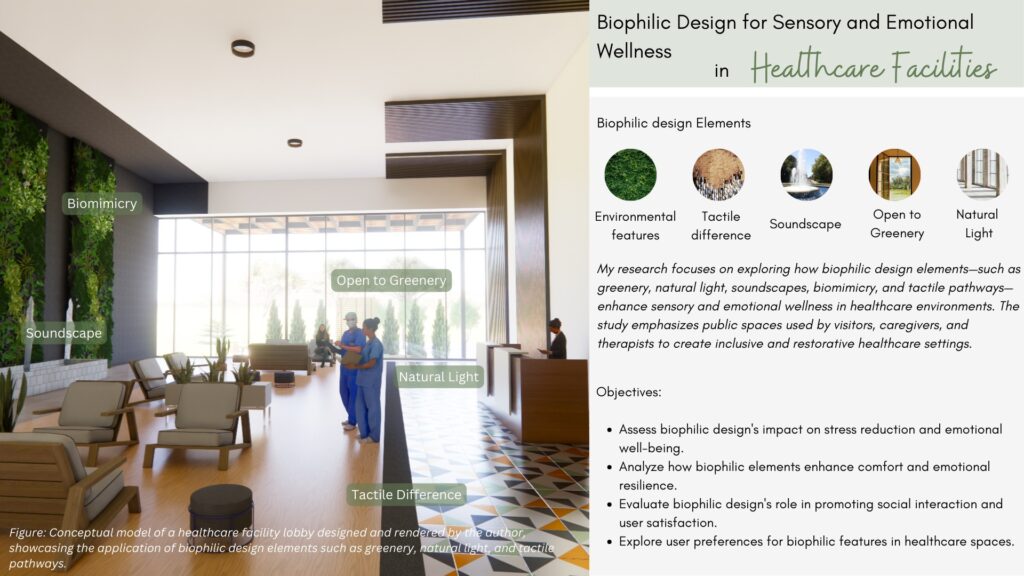
We are thrilled to announce that a research presentation by our graduate student, Akshaya Balakrishnan, and Gibbs Faculty Advisor, Dr. Matin, has been recognized among the top five in the 2024-IDEC-Scholarship of Design Research (SODR) category. The presentation, titled “Biophilic Design for Sensory and Emotional Wellness in Healthcare Facilities,” explores the profound impact of biophilic design elements on the well-being of individuals in healthcare settings. This study explores the impact of biophilic design elements—biomimicry, greenery and plant life, soundscapes, natural light, and tactile pathways—on the sensory and emotional well-being of individuals in healthcare facilities. The IDEC 2025 Annual Conference will be held in Chicago, Illinois from March 16 to March 19, 2025.
High-Performance Interior Architecture Lab Featured in Revista infoCONSTRUCT
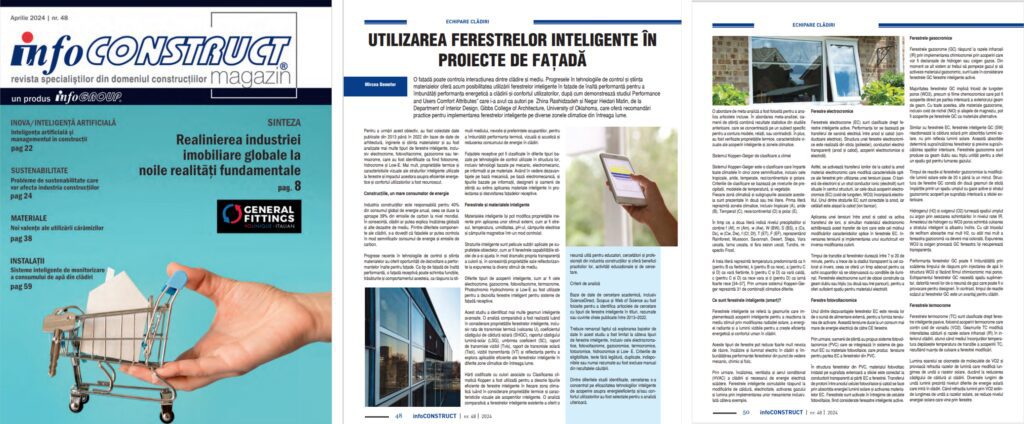
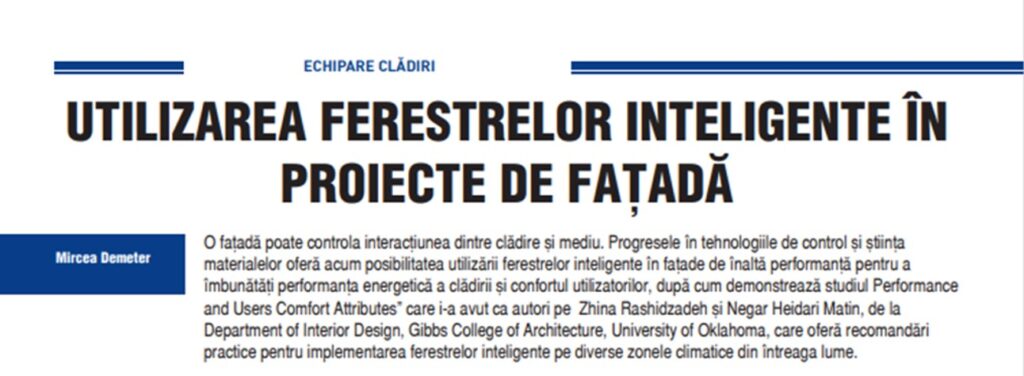
We are excited to share that our recent study on the application of smart materials in high-performance windows has been featured in the latest issue of Revista infoCONSTRUCT (Issue No. 48). The article, titled “UTILIZAREA FERESTRELOR INTELIGENTE ÎN PROIECTE DE FAÞADÔ, highlights the innovative work conducted at the HPIA Lab. As mentioned in the article:
A facade can control the interaction between the building and the environment. Advances in control technologies and material science now offer the possibility of using smart windows in high-performance facades to improve the building’s energy performance and user comfort. This is demonstrated by the study “Performance and Users Comfort Attributes,” authored by Zhina Rashidzadeh and Negar Heidari Matin from the Department of Interior Design, Gibbs College of Architecture, University of Oklahoma. The study provides practical recommendations for implementing smart windows in various climatic zones around the world.
Please see the related link below; Magazine
New Publication: Design Considerations for Virtual Reality Intervention for People with Intellectual and Developmental Disabilities
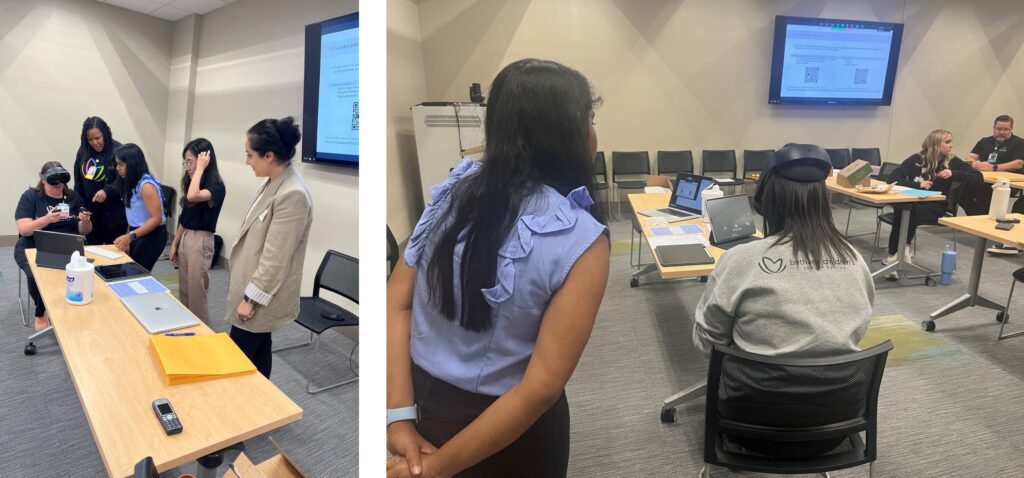
We are pleased to announce the publication of a new paper titled “Design Considerations for Virtual Reality Intervention for People with Intellectual and Developmental Disabilities,” co-authored by Dr. Negar Heidari Matin in collaboration with Dr. Ye Ji Yi, Dr. Darin Brannan, Dr. Michael Johnson, and Dr. Anna Nguyen. This work was made possible through the collaboration with scholars from the OU Health Sciences Center and the generous support from the OU Health, Well-being, and Built Environment Seed Grant and the OU Data Institute for Societal Challenges Grant.
This systematic review aims to explore virtual reality (VR) applications for rehabilitation purposes among people with intellectual and developmental disabilities (IDD), identify their effects on rehabilitation outcomes, explore themes to consider in VR intervention design, and provide guidance for designers and researchers in creating therapeutic environments using VR technology.
We are excited about the potential impact of this research in advancing the use of VR technology for therapeutic purposes and improving the quality of life for individuals with IDD.
Recent Patent Filing: Responsive Colored Facades

We are excited to announce that Dr. Negar Heidari Matin, in collaboration with Zhina Rashidzadeh, has recently filed a patent for their innovative work on “Responsive Colored Facades” with Patent ID of OU 2024-013. The first and second provisional applications have been submitted, and we are working closely with the OU Office of Technology Commercialization to bring this groundbreaking technology to market.
This patent represents a significant advancement in facade technology, offering dynamic color-changing capabilities that respond to environmental conditions. This innovation not only enhances the aesthetic appeal of buildings but also contributes to energy efficiency and user comfort.
We look forward to the continued development and commercialization of this technology, which has the potential to transform the way we think about building facades.
HPIA Lab Featured in Glass Canada
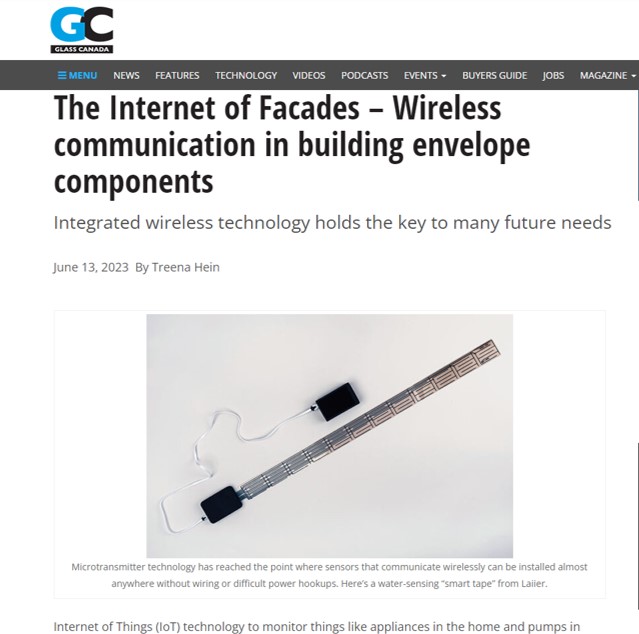
We are thrilled to announce that the High-Performance Interior Architecture (HPIA) Lab’s work has been featured in the June 13, 2023 issue of Glass Canada. The article, titled “The Internet of Facades – Wireless Communication in Building Envelope Components: Integrated Wireless Technology Holds the Key to Many Future Needs,” was written by Treena Hein and includes a brief interview with Dr. Negar Heidari Matin. As mentioned in the article:
“Let’s first look at ‘Comparative Analysis of Technologies Used in Responsive Building Facades,’ published by a team including Negar Heidari Matin, director and founder of the new Oklahoma University High Performance Interior Architecture Laboratory (an interdisciplinary research team spanning interior architecture, building science, and advanced building technology). In the analysis, scientists note that facade sensor setups could have central or decentralized sensors and could also include material sensors. When asked for an example, Matin notes that some types of smart glass ‘can detect moisture and unacceptable temperature changes.’ Also known as switchable glass, dynamic glass, and smart-tinting glass, smart glass is able to change its reflective properties to darken and prevent sunlight and heat from entering a building and also provide privacy. Active smart glass technologies include electrochromic, liquid crystal, and suspended particle. Passive versions include thermochromic and photochromic technologies.”
We are proud of the recognition our research is receiving and look forward to continuing our work in advancing smart materials and technologies in building design.
Please see the related link; The Internet of Facades – Wireless communication in building envelope components – Glass CanadaGlass Canada
Collaborative Research Team Secures $10,000 Grant for Study on Virtual Multi-Sensory Environments
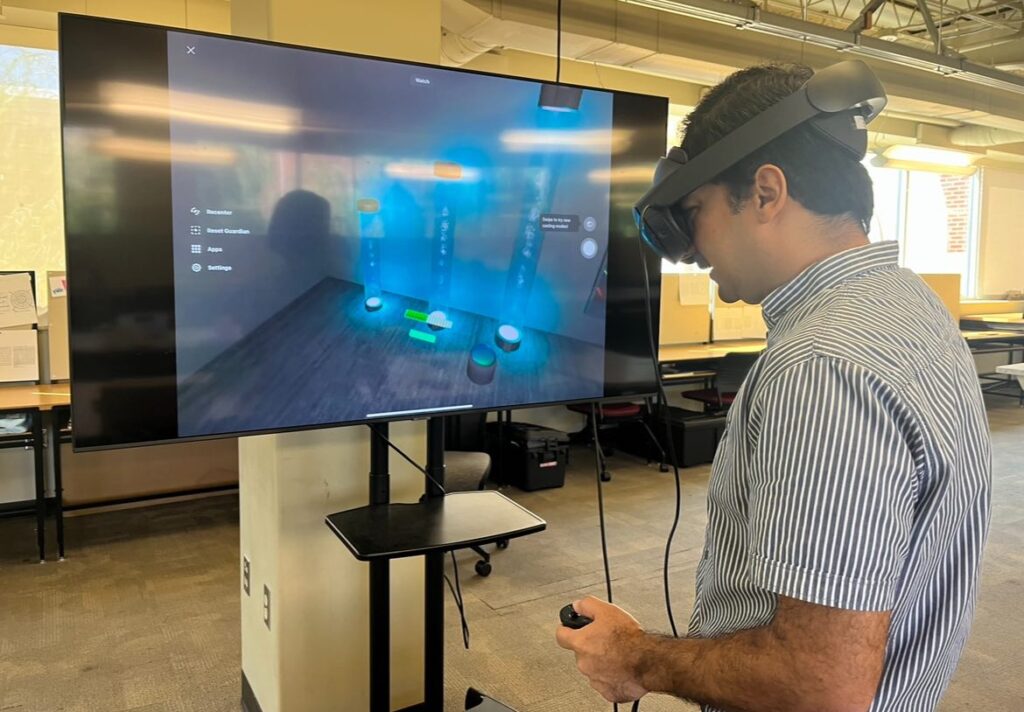
Dr. Matin, in collaboration with Dr. Yi and Dr. Nguyen, has received a $10,000 grant from the Data Institute for Societal Challenges (DISC) at the University of Oklahoma. This funding will support their research project titled “The Interaction between Virtual Multi-Sensory Environments and Children with Intellectual and Developmental Disabilities in Central Oklahoma.” The project aims to investigate how virtual multi-sensory environments can benefit children with intellectual and developmental disabilities, potentially leading to innovative therapeutic approaches and improved quality of life for these children. This research underscores the team’s commitment to leveraging technology for societal benefit.
Dr. Matin and HPIA Lab Secures Funding for Human-Centric Responsive Facade Project
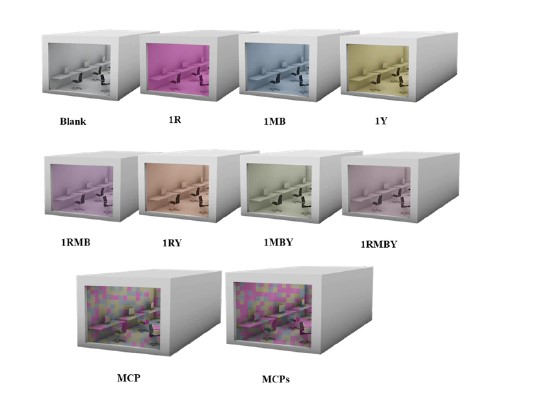
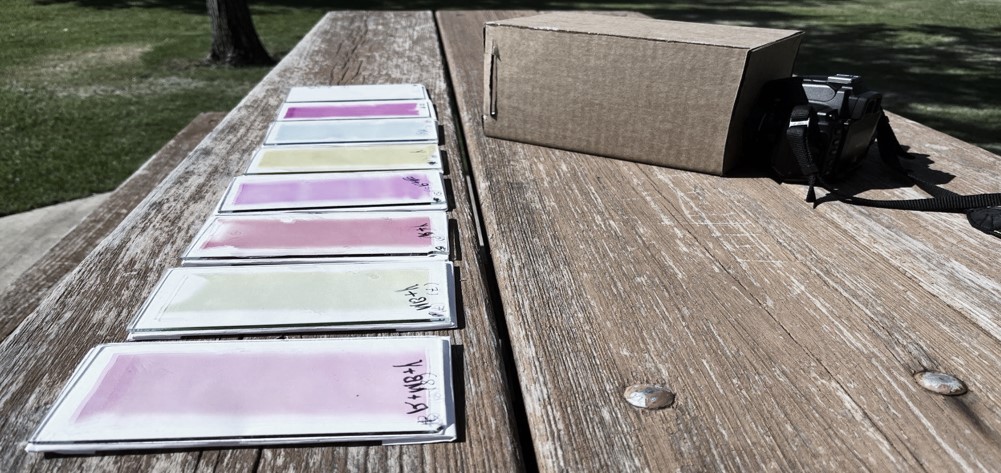
Dr. Matin has been awarded a $6,400 grant from the Gibbs College of Architecture’s Program for Research Enhancement (PRE). This funding will support her innovative project titled “A Human-Centric Responsive Facade.” The project aims to develop facade systems that prioritize human interaction and responsiveness, enhancing both functionality and user experience in architectural design. This research highlights Dr. Matin’s dedication to advancing architectural practices through human-centric innovations.
Dr. Matin’s Interdisciplinary Study on Virtual Multi-Sensory Therapy for Children Secures $30,000 Health, Well-Being, and Built Environment Seed Grant

Dr. Matin and Dr. Yi, in collaboration with the OU Health Sciences Center, have been awarded a $30,000 grant from the Health, Well-Being, and the Built Environment Seed Grant Opportunity. This interdisciplinary project, titled “The Therapeutic Impacts of Virtual Multi-Sensory Environments (MSEs) on Children with Intellectual and Developmental Disabilities in Central Oklahoma,” aims to explore how virtual multi-sensory environments can benefit children with intellectual and developmental disabilities. The research seeks to develop innovative therapeutic approaches that could significantly enhance the quality of life for these children. This project exemplifies the collaborative efforts between architecture and health sciences to address critical societal challenges.
Dr. Matin and Dr. Yi’s Research Recognized at the 2024 IDEC Annual Conference
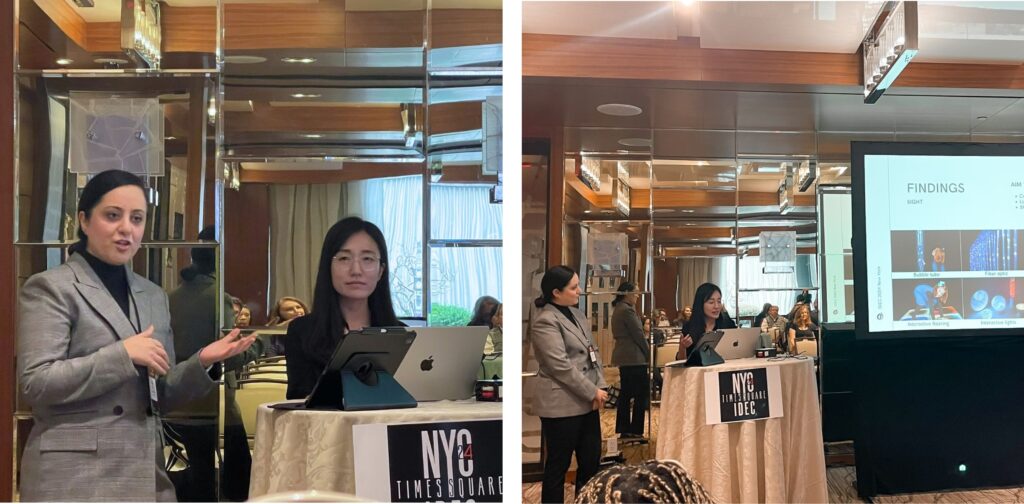
Dr. Matin and Dr. Yi’s collaborative research on “Evidence-Based Multisensory Environments Design Considerations for Neurodivergent People” has been selected as one of the top-five abstracts at the prestigious 2024 Interior Design Educators Council (IDEC) Annual Conference in New York. This recognition highlights the significance of their work in advancing the design of multisensory environments tailored to the needs of neurodivergent individuals. Their research provides valuable insights and practical considerations for creating inclusive and supportive spaces, underscoring the importance of evidence-based design in improving the quality of life for neurodivergent people.
Dr. Matin and PhD Student Rashidzadeh’s Research Recognized at 2023 IDEC Annual Conference
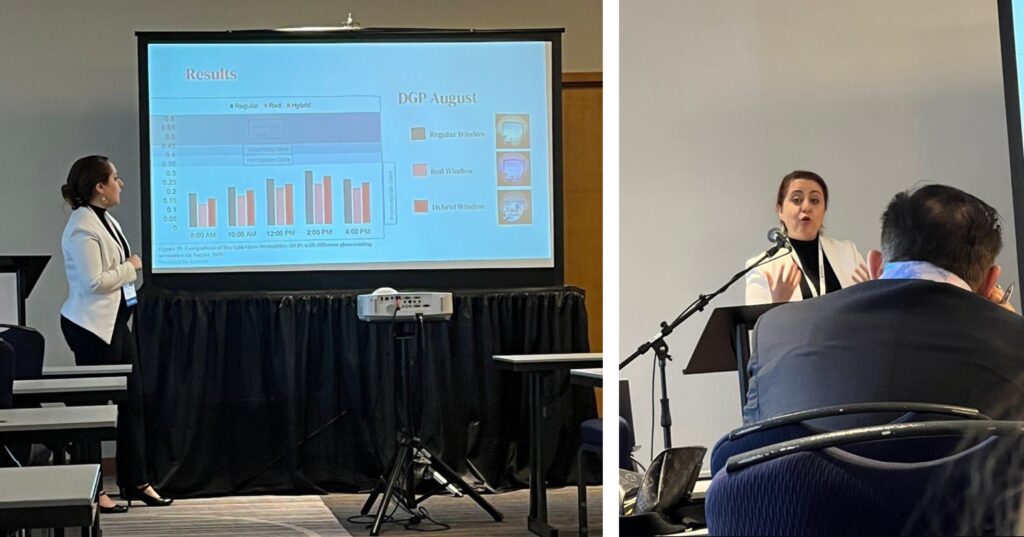
Dr. Matin and her PhD student, Zhina Rashidzadeh, have achieved significant recognition for their research on “Visual Comfort Simulations of a Designed Responsive Façade for Indoor Environments.” Their work has been selected as one of the top-five abstracts at the 2023 Interior Design Educators Council (IDEC) Annual Conference in Vancouver, Canada. Zhina Rashidzadeh, who is a research assistant in the High-Performance Interior Architecture Lab, collaborated closely with Dr. Matin on this project. Their research focuses on enhancing visual comfort in indoor environments through innovative responsive façade designs, contributing valuable insights to the field of interior architecture. This accolade underscores the impactful research being conducted in Dr. Matin’s lab and highlights the promising contributions of emerging scholars like Rashidzadeh.
Dr. Matin Secures Funding for Daylight Optimization Research
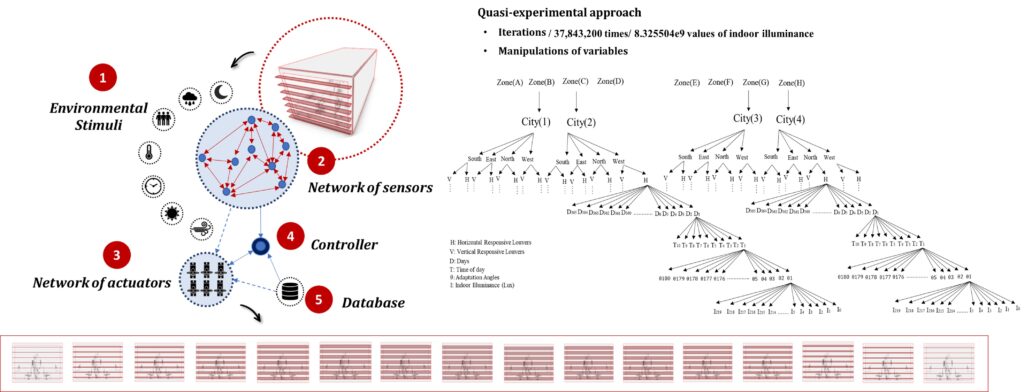
Dr. Matin has been awarded a $14,980 grant from the Faculty Investment Program (FIP), sponsored by the Norman Campus Research Council at The University of Oklahoma. This funding will support her project titled “Comprehensive Daylight Optimization for Responsive Facades.” The research aims to enhance the performance of responsive facade systems by optimizing daylight utilization, thereby improving energy efficiency and occupant comfort in buildings. This project underscores Dr. Matin’s commitment to advancing sustainable architectural practices through innovative design solutions.
Dr. Matin Receives Grant for Smart Windows Research
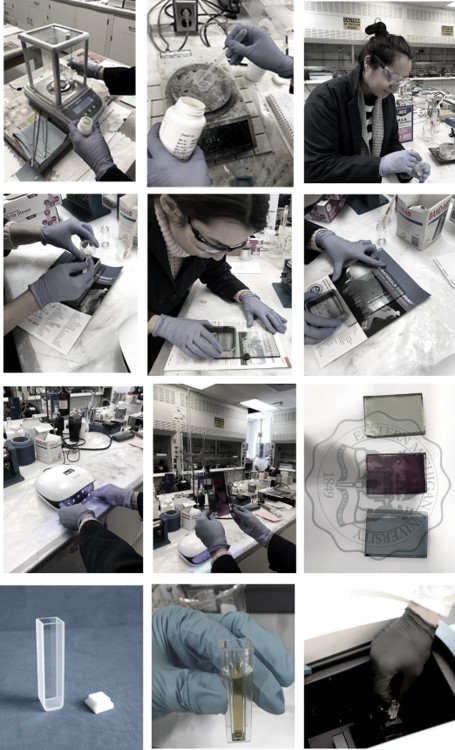
Dr. Matin has been awarded a $4,950 grant from the Gibbs College of Architecture’s Program for Research Enhancement (PRE). This funding will support her innovative project titled “Prototyping and Testing Smart Windows Using Photochromic Glasses.” The research focuses on developing and testing smart windows that utilize photochromic glasses to dynamically adjust light transmission based on environmental conditions. This project aims to enhance energy efficiency and occupant comfort in buildings, showcasing Dr. Matin’s dedication to advancing sustainable and responsive architectural technologies.
OU Eco-Sooners Team Selected as 2024 Solar Decathlon Finalists


An interdisciplinary team of students from the University of Oklahoma (OU) has been selected as a finalist for the 2024 Solar Decathlon Competition. Competing in the Design Challenge’s Single-Family Housing Category, the team, known as the Eco-Sooners, is among 105 teams from 93 collegiate institutions participating this year. The Eco-Sooners team comprises fourteen students from various programs, including Interior Design, Architecture, Construction Science, Landscape Architecture, Mechanical Engineering, Civil Engineering, and Public Relations. The team is led by Dr. Negar Matin, a professor of Interior Design, with academic advisors Dr. Li Song, professor of Aerospace and Mechanical Engineering, and Dr. Shideh Shadravan, professor of Architecture. To stay updated on the OU Eco-Sooners’ progress, follow them on Instagram at @ou_ecosooners.
Gibbs Interior Design Faculty Paper Published in IEEE Xplore

Negar Matin, an assistant professor, has recently published a paper in IEEE Xplore titled “Computer-Aided Design Application in Determining Minimum Discomfort Glare.” The paper proposes a computational model for determining minimum discomfort glare for responsive facades by integrating spatial information and hourly Daylight Glare Probability data. The model was evaluated by simulating an office with a responsive facade and generating a year of hourly Daylight Glare Probability data for different facade configurations and locations/climate zones. The computational results show that the proposed optimization model can produce Daylight Glare Probability values within an acceptable range for various facade configurations, orientations, and locations/climate zones. This proposed innovative analytic approach has a significant impact on assessing the risk of discomfort glare and providing occupants comfort in commercial office settings.